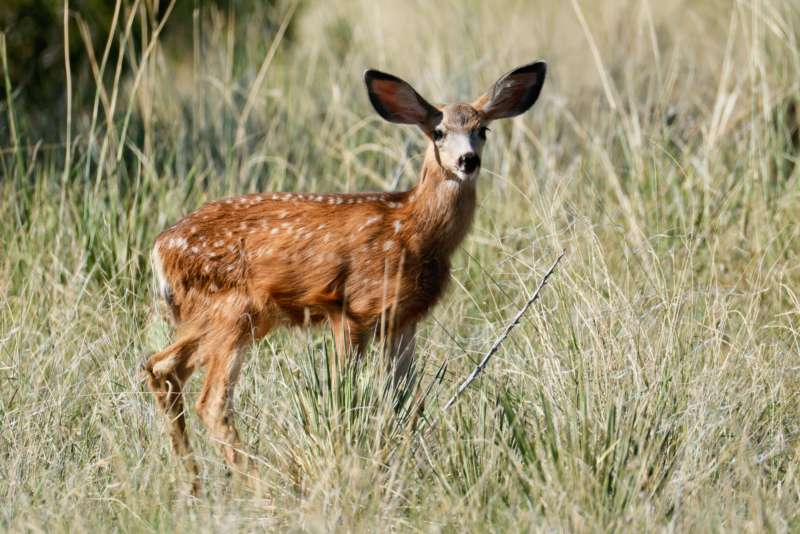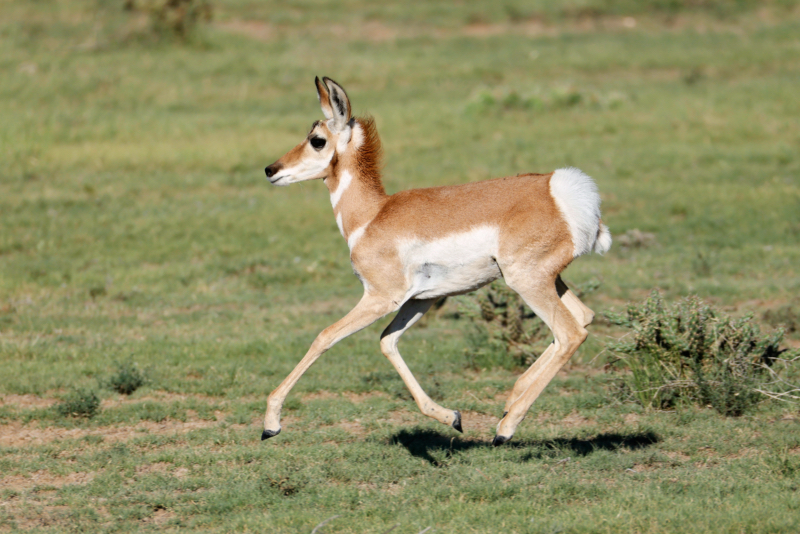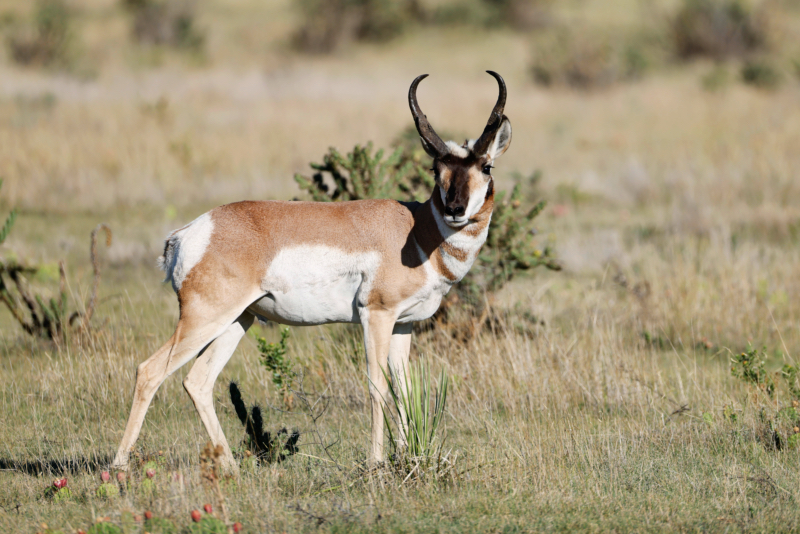With the increasing number of people at Black Mesa State Park, I wasn’t too hopeful about spotting much wildlife during my evening drive around the area. However, just a few minutes after leaving the park and heading toward the nature preserve, I was pleasantly surprised. I came across a Mule Deer Doe with two fawns. Though one fawn stayed hidden in the dark shadows alongside the doe, I managed to capture a photo of the other fawn standing in bright sunlight.

As I continued to the nature preserve, traffic picked up. I was particularly hoping to see Big Horn Sheep in a spot I was tipped off about. When I reached the area, I noticed three vehicles parked off the road, but there was no sign of people or sheep. Despite scanning the area, I saw nothing. A nearby creek or river flows through this area, and while I was tempted to explore, I wasn’t sure what was private property, so I decided to stay on the county road.
With no luck at the preserve, I headed back to Black Mesa State Park, deciding to visit the Prairie Dogs that live south of the park. I’m glad I did because I spotted a small group of Pronghorns near the Prairie Dog town. Among them was a young pronghorn, who seemed quite curious about me and my truck. It would pause to glance my way before trotting off to catch up with the others.



Here are some interesting facts I learned about baby pronghorns after doing some research:
Birth and Early Development
- Rapid Growth: Fawns can stand within minutes of being born and begin nursing within 2 hours. They can outrun a human within just a few days of birth.
Appearance and Growth
- Coloration: Newborn pronghorns have grayish-brown fur, which changes to adult coloration after about 3 months. They nurse for 5–6 months before being fully weaned.
Behavior and Survival Strategies
- Protective Tactics: For the first few days after birth, fawns are relatively weak and stay near water sources with their mothers. Female pronghorns use several tactics to protect their young from predators, including consuming the afterbirth and eating their fawns’ excrement to eliminate scents that could attract predators.
Social Development
- Summer Bands: Within days of birth, fawns begin traveling and foraging with their mother and other females in summer bands. The young pronghorns play extensively, developing strength and dexterity. Female pronghorns care for their young for 1 to 1.5 years before the offspring become fully independent.
Seeing these young pronghorns was a highlight of the evening, a reminder that even in a crowded park, there’s always a chance for wildlife encounters.
